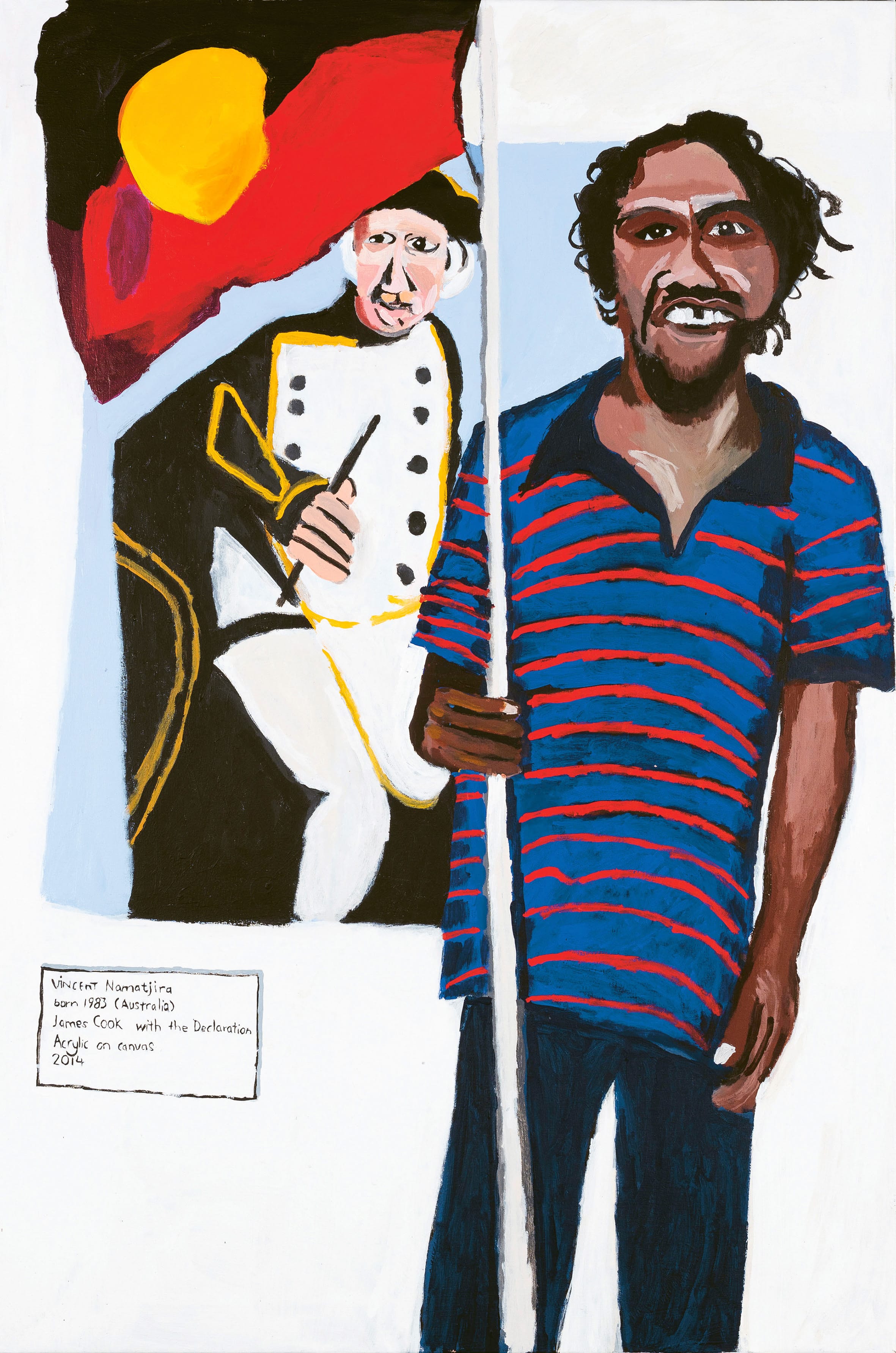
One of Australia’s most remote art centres is also its boldest. The artists of Iwantja Arts tell their own stories in a new brilliantly illustrated bilingual book.
THE Indigenous-owned Iwantja Arts centre has always been one to watch, says Hannah Presley. Now the senior curator of the University of Melbourne’s museums and collections, Presley was introduced to the artists of Iwantja in the remote north-west of South Australia in the early 2000s, and later visited the arts centre on a road trip with her father.
“There were so many remarkable ideas being explored by the artists there —different ways of making and telling stories,” she recalls in her introduction to Iwantja: An exuberant new movement in contemporary Indigenous art, a new bilingual monograph that celebrates some of the nation’s most innovative Indigenous artists. “I loved seeing the artworks coming in from across the Central Desert, canvases that still had red dirt on them, colours and designs that pointed to a sense of freedom and experimentation.”

This creative hub of visual art, film and music is located in the small Indigenous community of Indulkana, in rocky desert country on Anangu Pitjantjatjara Yankunytjatjara (APY) Lands, about 415 kilometres south of Alice Springs. The community was established in 1968 after an area of Granite Downs cattle station was excised and returned to the Anangu. Former stockmen and women, station hands and domestic workers from neighbouring cattle and sheep stations were among the community’s first residents and its first artists.
Artists Alec Baker and Kunmanara (Sadie) Singer drove to Adelaide in the early 1980s, and then on to Canberra, to advocate for printmaking facilities and painting studios in the community, at a time when Aboriginal people across Australia were campaigning for land rights. “These concurrent movements towards cultural autonomy—through both art and politics—underscore the Anangu appreciation of art as evidence of ownership and lore, and the role of art as a pathway to self-determination,” writes Lisa Slade, assistant director of artistic programs at the Art Gallery of South Australia, in one of the book’s essays, “For Anangu, the call of Country and of Tjukurpa (ancestral stories), and the right and responsibility to express it, are inseparable.”
The energy of an art centre is hard to describe, says Presley. “They buzz with the expected activity of an art studio, but there is also another layer to these spaces as sites of cultural continuation.” She loves the intergenerational life of Iwantja. “It is common in many Indigenous communities to see families sharing stories and encouraging each generation to paint and find their own artistic voice. This is a reflection of culture and kinship and I see this as one of the biggest strengths of Iwantja artists—collectively, they embrace the potential of art on many levels and are bold and brave in their artistic expression.”
Iwantja Arts supports the careers of about 40 mainly Yankunytjatjara artists. Senior artists, including co-founder Alec Baker, Betty Muffler and Nellie Ngampa Coulthard, paint alongside young emerging artists and award-winners, among them Vincent Namatjira, Kaylene Whiskey and Tiger Yaltangki.
“Today, Indulkana reveals itself as a community of individuals; of boundary riders, unlikely avengers and comedic heroes, all with compelling personal stories and distinct visual signatures,” writes Slade.

“I’m from the generation that grew up with Coca-Cola and TV as well as Tjukurpa and bush tucker, so I like to have a bit of fun with combining those two different worlds.”
Among the artists whose work and words appear in Iwantja is Kaylene Whiskey. Kungka kunpu (strong women) feature in her vibrant works, the likes of Wonder Woman, Dolly Parton, Catwoman, Tina Turner and Cher. “I love trying different things in the art centre,” says Whiskey. “I’m from the generation that grew up with Coca-Cola and TV as well as Tjukurpa and bush tucker, so I like to have a bit of fun with combining those two different worlds.”
Arguably Iwantja Arts’ “greatest boundary rider”, writes Slade, is Vincent Namatjira, a great-grandson of the famed landscape artist Albert Namatjira. Vincent was born in Mparntwe, Alice Springs, lived in and around Perth in the foster-care system, and now works from Iwantja Arts and lives in Indulkana with his Pitjantjatjara/Yankunytjatjara partner and their three daughters.

He has established himself as a witty, subversive portraitist. “The paintbrush—and a sense of humour—is a weapon that can bring the rich and powerful down to our level,” he writes in Iwantja. “I also use the paintbrush to lift others up, to celebrate Indigenous leaders and personal heroes.” In his works, Queen Elizabeth II appears in the Central Desert with a pet dingo and Namatjira himself, wearing an AC/DC T-shirt. There are guest appearances in unlikely places by the likes of James Cook, Vladimir Putin and Donald Trump alongside Namatjira, “as a way of putting them on the same level as me and everybody else, so we’re all equal”.
“The first wave of Iwantja’s senior artists—many of whom were among the first generation to see colonisers—expressed aspects of Anangu culture from before, during and after frontier conflict,” writes Slade in her essay. “Now younger generations of artists are rearticulating their culture amid the new frontier of Western social influence. And hence, a new Western emerges …
Not the American frontier variety, but a new type of Western, a revisionist Western—an Anangu Western.”
Iwantja Arts; Iwantja: An exuberant new movement in contemporary Indigenous art